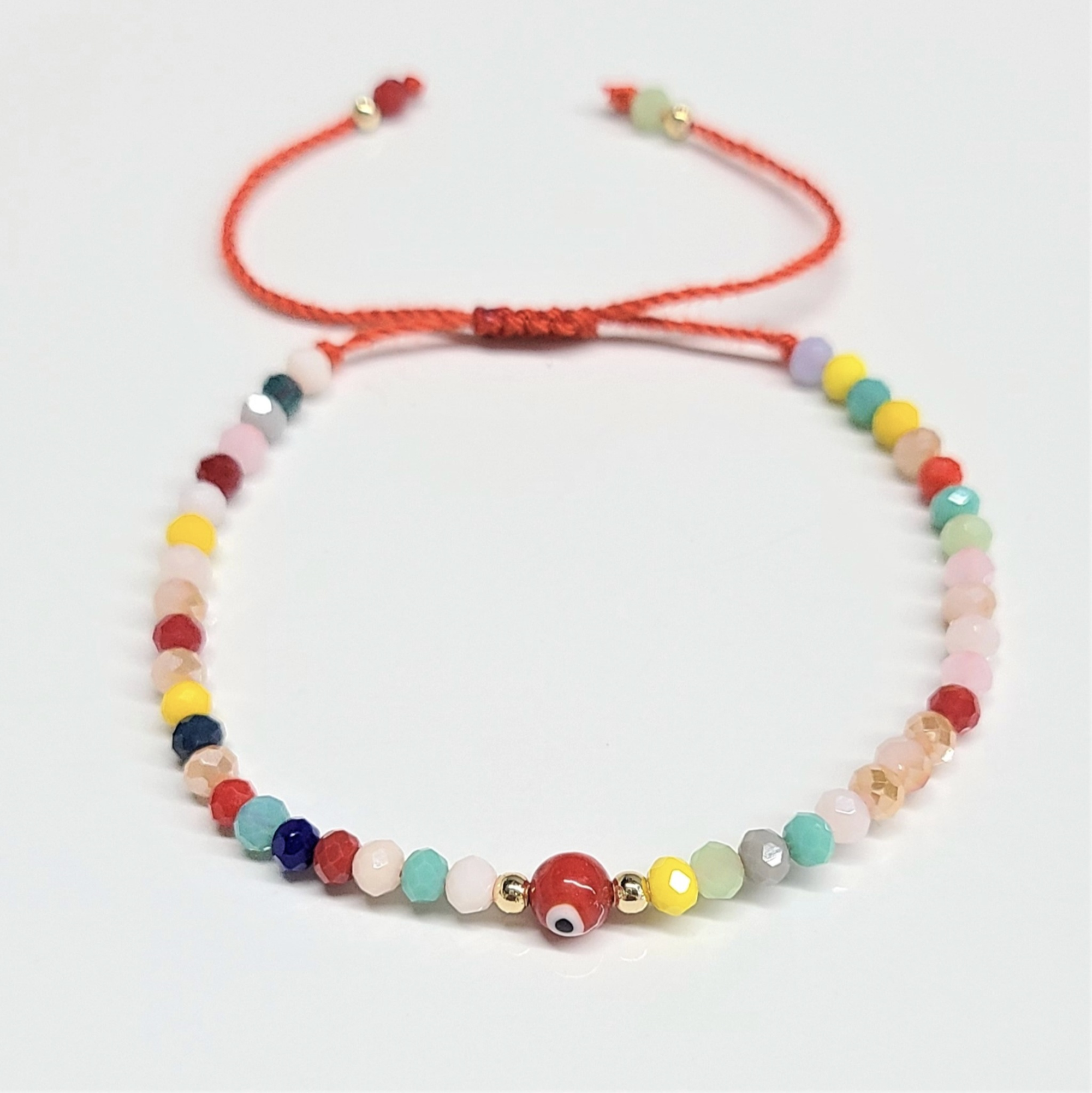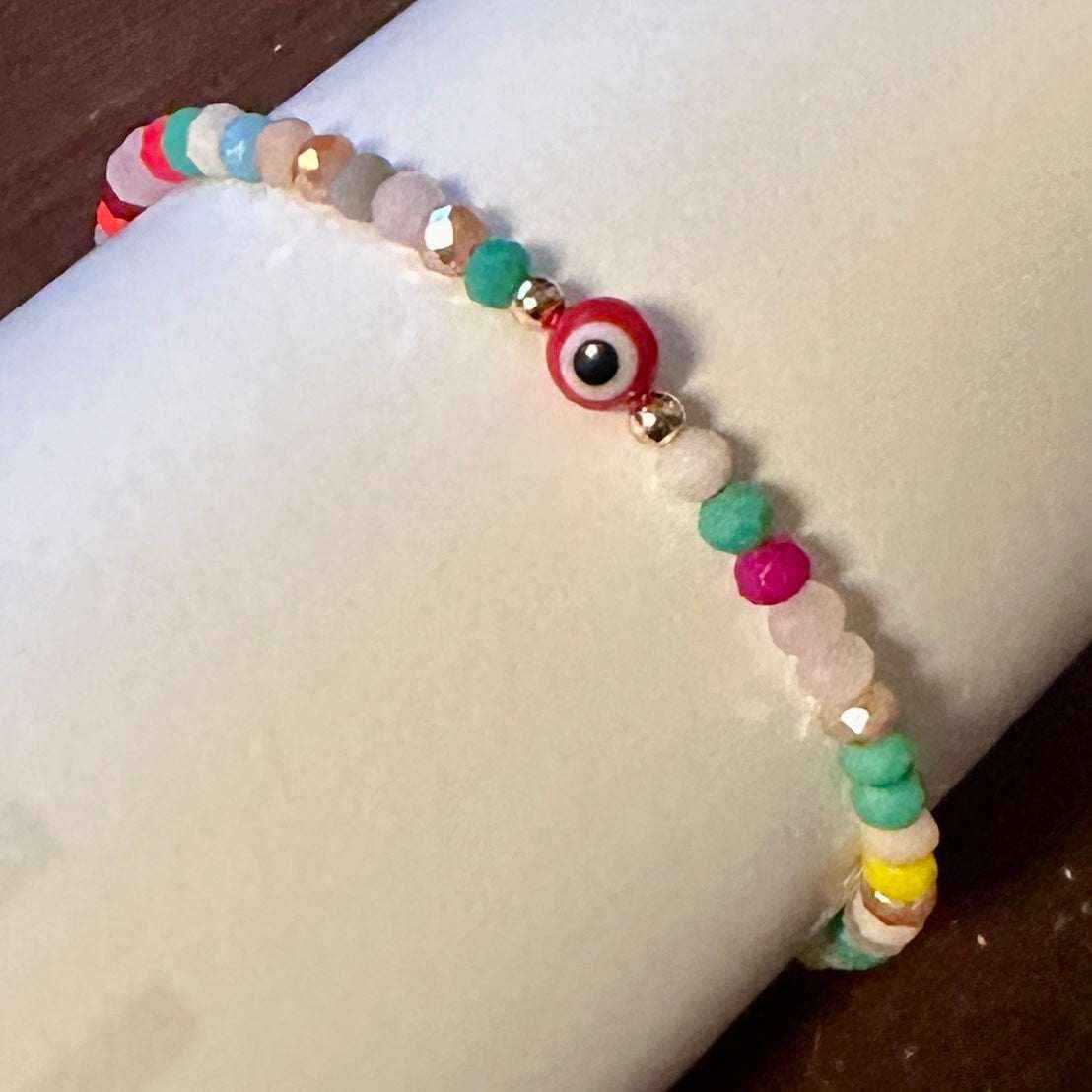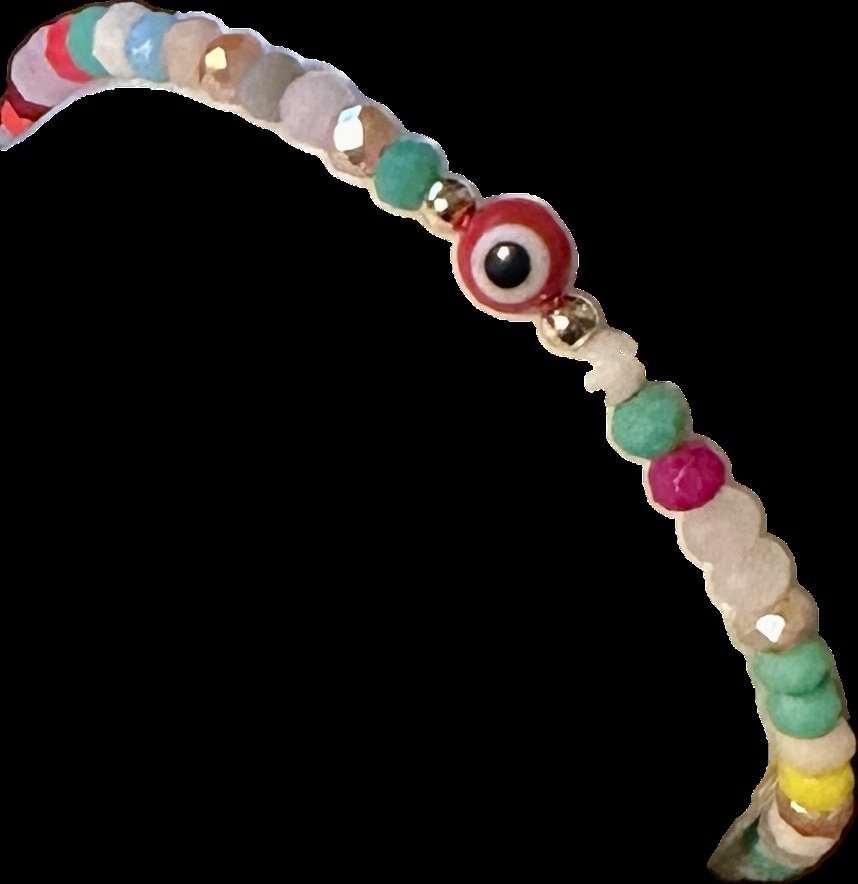


Protection Bracelet - Red String Evil Eye w/ Faceted Beads
Red String Bracelet
Embrace the protective and auspicious power of the red string bracelet, a symbol deeply rooted in various cultural traditions worldwide. This simple yet powerful accessory carries a rich tapestry of meanings across different cultures, each attributing their unique blessings and beliefs to its wear.
In Jewish Kabbalistic tradition, the red string is worn to ward off the evil eye and attract good fortune. Traditionally, it is tied on the left wrist, the receiving side of the body and soul, often blessed with prayers and worn as a shield against negative energies.
In Hinduism, the red string, known as "Kalava" or "Mauli," is tied during religious ceremonies to signify commitment, protection, and divine blessings. It is commonly seen during rituals and worn by both men and women as a sacred thread invoking the presence and protection of the gods.
In Buddhist practices, especially within Tibetan Buddhism, the red string bracelet is a token of protection and good luck. It is often tied during a ceremony or blessing by a monk, symbolizing the interconnectedness of all beings and the safeguarding of the wearer’s spiritual path.
Chinese culture holds the red string as a symbol of the “red thread of fate,” believed to connect those destined to meet regardless of time, place, or circumstances. This thread may stretch or tangle, but it will never break, symbolizing the power of fate and destiny in uniting loved ones.
Additionally, in Latin American cultures, the red string is known as "Mal de Ojo" bracelet and is used to protect infants and children from the evil eye. It is often adorned with small charms or beads, believed to enhance its protective properties and ensure the well-being of the young.
Our red string bracelet is handcrafted with love and intention, woven to carry these multifaceted blessings from across the world. Whether you wear it for protection, luck, or as a reminder of your connection to the universe, this bracelet serves as a constant companion on your journey through life.
The Evil Eye is a concept that transcends cultures and epochs, representing a powerful symbol of protection against malevolent forces. Its origins trace back thousands of years, permeating various cultures and belief systems around the world. This expanded description delves into the cultural diversity and metaphysical properties of the Evil Eye, excluding health-related topics, to provide a comprehensive understanding of its significance and applications.
Historical and Cultural Background
-
Ancient Mesopotamia: The concept of the Evil Eye first appeared in ancient Mesopotamia around 3,000 BC. It was believed that the malevolent glare of the Evil Eye could bring misfortune, injury, or bad luck to the person at whom it was directed. Amulets and talismans were crafted to protect individuals from these harmful influences.
-
Ancient Greece and Rome: In ancient Greece and Rome, the Evil Eye was a well-known phenomenon. Greeks referred to it as "baskania," and Romans called it "oculus malus." They believed that envy and jealousy could project negative energy through one's gaze. Protective charms, such as the "Nazar" in Greece, were used to ward off this malevolent force.
-
Middle Eastern Traditions: The Evil Eye is a significant element in Middle Eastern cultures, particularly within Islamic traditions. Known as "Ayn al-Hasad" or "Nazar," it is believed that the envious look can cause harm. Blue glass beads, often with an eye motif, are popular protective amulets in this region.
-
Jewish Folklore: In Jewish culture, the Evil Eye is referred to as "Ayin Hara." Protective measures include the use of hamsas (hand-shaped amulets) and red string bracelets, which are tied around the wrist to absorb negative energy.
-
South Asian Beliefs: In South Asia, particularly in India, the Evil Eye is known as "Nazar" or "Drishti." Various rituals and talismans, including lemon-chili hangings and black kohl, are used to protect against its effects.
-
Latin American Traditions: In Latin America, the Evil Eye is called "Mal de Ojo." It is believed that infants and young children are particularly susceptible. Protective practices include wearing red bracelets and using special charms.
Metaphysical Properties and Uses
-
Protection: The primary metaphysical property of the Evil Eye is protection. It is believed to safeguard individuals from negative energies, envy, and harm. Amulets featuring the Evil Eye symbol are commonly worn or displayed to create a protective barrier around the wearer.
-
Deflection of Negative Energy: The Evil Eye amulet is thought to reflect negative energy back to the source. This deflection prevents the harmful intentions from affecting the intended target, ensuring that the wearer remains safe and secure.
-
Balancing Energies: The symbol of the Evil Eye is also used to balance energies. It is believed to neutralize imbalances caused by negative emotions such as envy and jealousy. This equilibrium promotes a harmonious environment and personal well-being.
-
Spiritual Awareness: Wearing or meditating with the Evil Eye can enhance spiritual awareness and insight. It serves as a reminder to remain mindful of one's surroundings and the intentions of others, fostering a heightened sense of intuition and protection.
-
Symbol of Vigilance: The image of an eye represents constant vigilance. By wearing the Evil Eye, individuals are reminded to stay alert and aware of potential threats, both physical and metaphysical.
Cultural Interpretations and Practices
-
Greek Traditions: In Greece, the Evil Eye is often depicted in blue and white, symbolizing the purity and clarity needed to ward off evil. It is commonly found in jewelry, home decor, and as part of religious rituals.
-
Turkish Practices: The "Nazar Boncuk," a blue bead with an eye motif, is a ubiquitous symbol in Turkey. It is used in various forms, from keychains to wall hangings, and is believed to protect against jealousy and bring good fortune.
-
Islamic Culture: The Evil Eye is addressed in Islamic teachings, and protective phrases from the Quran, such as "Masha'Allah" (God has willed it), are used to prevent envy. Amulets with these phrases are often carried or displayed.
-
Jewish Customs: The hamsa, also known as the Hand of Fatima or Hand of Miriam, is a prominent symbol in Jewish culture. It is believed to offer protection and bring blessings, power, and strength.
-
Indian Rituals: In India, various rituals are performed to ward off the Evil Eye, such as burning camphor or using specific mantras. Charms and amulets featuring symbols like the "Nazar Battu" are also popular.
-
Latin American Remedies: In Latin America, traditional healers (curanderos) may perform rituals to cleanse individuals of the Evil Eye. These rituals often involve the use of herbs, eggs, and prayers to remove negative energy.
Conclusion
The Evil Eye is a profound symbol of protection and spiritual vigilance, deeply rooted in the cultural and metaphysical traditions of many societies. Its enduring presence across diverse cultures underscores its universal significance in guarding against negative energies and promoting harmony. By understanding its rich history and varied interpretations, one can appreciate the profound role it plays in the metaphysical realm and its continued relevance in modern spiritual practices.



